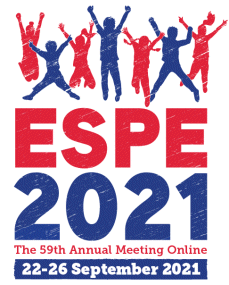
59th Annual ESPE (ESPE 2021 Online)
Online,
22 Sep 2021 - 26 Sep 2021

Free Communications
Diabetes
hrp0094fc4.1 | Diabetes | ESPE2021
Role of physical activity and sedentary behavior on early markers of cardiovascular disease in Canadian adolescents with and without type 1 diabetes: the CARDEA study
Harnois-Leblanc Soren , McNealis Vanessa , Friedrich Matthias G , Hulst AndraeaVan , Nuyt Anne-Monique , Bigras Jean-Luc , Barnett Tracie A. , Benedetti Andrea , Mathieu Marie-Eve , Drapeau Vicky , Sylvestre Marie-Pierre , Henderson Melanie ,
hrp0094fc4.2 | Diabetes | ESPE2021
A Randomised Controlled Cross-Over Trial of the Hybrid Closed-Loop Insulin Delivery System Diabeloop vs. Sensor-Augmented Pump Therapy in Children Aged 6-12 Years
Kariyawasam Dulanjalee , Morin Carole , Casteels Kristina , Tallec Claire Le , Sfez Annie , Godot Cecile , Huneker Erik , Garrec Nathalie , Polak Michel , Charpentier Guillaume , Franc Sylvia , Beltrand Jacques ,
hrp0094fc4.3 | Diabetes | ESPE2021
Aldosterone and pro-atrial natriuretic peptide kinetics in response to rehydration in children with diabetic ketoacidosis
Burckhardt Marie-Anne , Otto Marije , Gotta Verena , Beglinger Svetlana , Bachmann Sara , Hess Melanie , Rentsch Katharina , Koch Gilbert , Davis Elizabeth , Zumsteg Urs , Jones Tim , Pfister Marc , Szinnai Gabor ,
hrp0094fc4.4 | Diabetes | ESPE2021
Effect of newer CFTR modulator therapy on glycaemic control in adolescents with CFRD
Park Julie , Walsh Anna , Kerr Sue , Woodland Clare , Southward Suzanne , Deakin Mark , Thursfield Rebecca , Senniappan Senthil ,
hrp0094fc4.5 | Diabetes | ESPE2021
Molecular Genetic Diagnosis and Research of Candidate Genes by Targeted Next Generation Sequence Analysis and Whole Exome Sequencing Method in Monogenic Diabetes: MODY-TURK Project
Gokşen Damla , Evin Ferda , Işık Esra , Ozen Samim , Atik Tahir , Ozkınay Ferda , Akcan Neşe , Ozkan Behzat , Buyukinan Muammer , Ozbek Mehmet Nuri , Darcan Şukran , Onay Huseyin ,
hrp0094fc4.6 | Diabetes | ESPE2021
Clinical and genetic heterogeneity of HNF4A/HNF1A mutations in a multicentre paediatric cohort
McGlacken-Byrne Sinead M. , Mohammad Jasmina Kallefullah , Conlon Niamh , Gubaeva Diliara , Siersbaek Julie , Jorgen Schou Anders , Demibilek Huseyin , Dastamani Antonia , Houghton Jayne , Brusgaard Klaus , Melikyan Maria , Christesen Henrik , Flanagan Sarah E. , Murphy Nuala P. , Shah Pratik ,



